Mar 29, 2018 | coins, currency, education, technology, web
 I am often asked what resources I used for online research when writing articles for the Coin Collectors Blog. For more than 12 years of writing this blog, I have found hundreds of websites that I have used to various degrees. However, there are a few that have provided the best information.
I am often asked what resources I used for online research when writing articles for the Coin Collectors Blog. For more than 12 years of writing this blog, I have found hundreds of websites that I have used to various degrees. However, there are a few that have provided the best information.
No single website can provide all of the information available. This is why I keep many sources at hand. The problem is that I do not keep them in one neat location. Some of them I remember and then there are snippets of text, bookmarks, and even computer code that I refer to when I have to start looking up information. Not only will this provide you with research starting points but it also gives me a chance to organize my bookmarks!
Before I list my sources, there is one tool that must be included in any online reference: Google. Google is a great search tool because it is the only search engine that really tries to add context of the search. For example, if you are searching for something to do with coin dies you will get related items and not information about games with dice or something about death.
When searching for information using Google is to try to be as exact as possible with the search term including using characters with diacritic (accent) marks. Using the proper diacritic marks will help find foreign language sources that could provide additional information not found in English. Also, Google can search using terms that are entered using non-Latin characters including Arabic, Cyrillic, Greek, Hebrew, and Asian languages.
If you find a non-English site or a site in a language you are not familiar with, Google Translate (translate.google.com) is a great tool for translating this information. You can either enter phrases into Google Translate or enter a URL for it to download and translate pages.
Primary Sources
When it is time to find information about modern coins, currency, production totals, and images, the primary source are the government bureaus that manufacture the money.
United States Mint: www.usmint.gov
Bureau of Engraving and Printing: www.moneyfactory.gov
There is a lot that goes into the money manufacturing process in the U.S. An overview of the bureaus and other agencies can be found the U.S. Coin and Currency Production page.
Trusted Sources
Although there is quite a bit of numismatic information available online, one of the biggest benefit of being a member of the American Numismatic Association is to have access to The Numismatist in electronic form. The $28 per year basic membership gives you access to this resource electronically.
The Numismatist
For other historical publication and a lot of information, consider using the Newman Numismatic Portal at Washington University in St. Louis. Aside from being a rich source of information, many of the publications they index are located in the Internet Archive. Clicking through to the site will allow you to download many of the publications as a PDF or ePub for your tablet reader.
Another archive you may also want to search is Google Books. The advantage of Google Books is that they offer more formats for the books that have been imaged including a version that has been processed using an optical character recognition (OCR) program. While the OCR versions are far from perfect, it is wonderful if you are looking to copy-and-past quotes into your own writing. Google Books may not have the full text of every reference found because of copyright restrictions but once you find the book you can either buy the book or borrow it from a library making it a great for doing index searches.
ANA members can borrow books from the Dwight N. Manley Numismatic Library. There is no cost to borrow books but you will have to pay for shipping. The Library can also provide research and copy services for a fee. Although research services are fee-based and open to anyone, the fees are lower for ANA members.
Archived Publication Sources
Guides
Online guides are resources for individual coins. Each of the resources listed have their strengths and weaknesses making it important that you consult more than one when looking for information. The following list are the guides I consult in alphabetical order:
Price Guides
Whether you are a casual collector, more expert, or someone looking at coins, the one question that is always ask is “What is that coin worth?”
Coin values are subjective and based on a lot of factors. It can be so confusing that I wrote a two part series How Are Coins Priced (Part I and Part II). Even if you understand the principles, there is a need for price guides.
Price guides are not perfect. They have their own formula and their own biases for what makes up prices. For example, the price guides sponsored by the grading services are the prices for coins in their holders. This is why I consult a few price guides when doing research. The following are the price guides I have used:
One of the key aspect of pricing is the level of conservation or the grade of the coin. When it comes to be able to judge the grade of the coin there is only one website I use:
Bullion Values
Another aspect of pricing is the value of the coin’s metals. There are many sites that can provide spot prices, I have found the following very helpful:
Communities
There are quite a few online communities that discuss numismatics. Some of them are very good while others can be a bit harsh for the average collector. For general knowledge and access to a wide range of knowledge I recommend the following:
The E-Sylum has been called the best free numismatic resource on the Internet. After being a subscriber for the last five years, it is difficult to argue with that statement. Many of the contributors are a Who’s Who of the numismatic industry. While you can read the E-Sylum online, you should subscribe. Better yet, if you are an ANA member you will receive a copy in email. Do not delete it! Read it! It gets a PR-70DCAM rating from this reviewer!
Mobile Apps
If we are talking about online access to sources there has to be a mention of mobile apps. Since I am an Apple iPhone user, I use the iOS version of these apps. However, all of them have Android equivalents. Some also have versions the run on Windows Mobile. Here are the apps I have installed on my iOS devices (in alphabetical order):
▸ Universal Apps (iPhone and iPad)
- Coinflation
- NGC
- PCGS Coin Cert Verification
- PCGS CoinFacts
- PCGS Photograde
- PCGS Price Guide
- XE Currency
▸ iPad Only
- The Numismatist HD (2009 – present)†
- The Numismatist Magazine (All editions)†
- Kcast Gold Live! (Kitco)‡
▸ iPhone only
- CDN Coin & Currency Pricing
- EyeNote (BEP)
- Gold Live!+ (Kitco)‡
- NantMobile MoneyReader
NOTES:
† Both apps are available for the iPhone
‡ Note that there are different versions for the iPhone and iPad. The “+” is not a typo.
▸ Website Links
Website Links are bookmarks on the phone’s Home Screen. On the iPhone open Safari and go to the page you want to bookmark the press the sharing icon (the box with the arrow pointed up). In the popup select “Add to Home Screen” from the set of icons on the second line.
Bookmarks
Do you want to add these links to your browser’s bookmarks? Right-click (or Mac users can CTRL-Click) on the following button and select whatever option your browser requires to save the file to hard drive. Import the file as an “HTML Bookmark” file to add these links to your book marks.
Nov 12, 2017 | coins, commentary, news, technology
 As I peruse the Interwebs for numismatic-related stories from non-numismatic sources, my searches are inundated with stories about Bitcoin, crypto-currencies, and blockchains. Most of the time, the stories are just noise given my objective to find information relevant to collectors including the issuance of circulating currencies and the impact of precious metals on the market.
As I peruse the Interwebs for numismatic-related stories from non-numismatic sources, my searches are inundated with stories about Bitcoin, crypto-currencies, and blockchains. Most of the time, the stories are just noise given my objective to find information relevant to collectors including the issuance of circulating currencies and the impact of precious metals on the market.
While there is some use of the technologies as an indicator of a store of something resembling wealth or as a new method of providing electronic transactions, the concept of inventing a currency out of thin air—or electronic bits—is something that may be more dangerous than the stock market.
Bitcoin, which is a type of crypto-currency, is traded using a blockchain, a technology that provides a mechanism for secured transactions between parties. Like the Federal Reserve Note, it is an invented currency whose value is in the eye of the beholder. The only difference between the Federal Reserve Note and crypto-currency is that the worth of the paper currency is backed by the full faith and credit of the United States government. Bitcoin has no backing, very little regulation, and could become as worthless as Enron stock as fast as it became worthless.
Although you may have issues with the way the federal government and the politicians have been conducting themselves, the government provides the backing to make sure that the currency you use has some representative value by law. It is called fiat money.
Crypto-currency not only has no intrinsic value, but it is not backed or supported by the government. It has no regulation and is worth what someone will provide in trade. The assignment of value to crypto-currency may be market driven but those who have seen the silver market of 1980, unregulated markets can cause significant problems.
The blockchains that protect the transactions are software creations. Software is what is used to provide the logic to the computer to do its job—or not do its job in the cases of Equifax, Target, Home Depot, the Office of Personnel Management, and any of the other servers you have heard attacked in the last few years.
Of course the most important thing to numismatists, crypto-currency has no presence in the physical world. You cannot create a collection of bitcoin since it really does not exist. And maybe that should be the question: if it does not have a physical form or a physical representation, is it really money?
And now the news…

November 6, 2017
The Stellarton Legion is now the proud recipient of a Nova Scotia Highlanders ceremonial unit coin. And Stellarton Legion president Jack Chaisson was on hand to take personal delivery of the coin from Lieutenant-Colonel Colin Todd at Pictou Legion, after attending the county Remembrance Day ceremony in town Sunday.  → Read more at ngnews.ca
→ Read more at ngnews.ca

November 6, 2017
The Royal Mint has released its official Remembrance Day coin ahead of commemorations on Saturday. Stephen Taylor, a graphic designer at the Royal Mint, said his artwork was inspired by the world-famous war poem 'In Flanders Fields' by John McCrae.  → Read more at standard.co.uk
→ Read more at standard.co.uk

November 6, 2017
The Perth Mint has released a world-first silver coin in the shape of a figure eight. Likely to be a hit with Chinese coin collectors and buyers, only 8888 of the 2oz, 99.99 per cent silver coins will be released at a recommended retail price of $218.  → Read more at thewest.com.au
→ Read more at thewest.com.au

November 7, 2017
Bruderer UK, which has nearly 50 years’ experience creating world renown precision high speed presses, has installed a state-of-the-art machine into the Royal Mint’s Llantrisant facility, giving the world famous institution additional speed, capacity and flexibility.  → Read more at expressandstar.com
→ Read more at expressandstar.com

November 8, 2017
Gold isn’t so shiny anymore. Globally, demand for the precious metal has fallen to its lowest level since late 2009, according to the World Gold Council. In the third quarter of 2017, demand for the haven asset was 915 metric tons, 9% lower than a year earlier.  → Read more at qz.com
→ Read more at qz.com

November 9, 2017
In January, 1999 Cassinelli Construction Co. was employed by Nevada State Public Works Department to remove a portion of Carolyn Street at the Nevada State Museum to construct a parking lot and build a small park facing Carson Street.  → Read more at elkodaily.com
→ Read more at elkodaily.com

November 9, 2017
Gold was once a common form of payment around the developed world, but after World War II the precious metal's influence began to wane. In 1971, when the United States finally put an end to the gold standard, the role of the yellow metal changed for good.  → Read more at fool.com
→ Read more at fool.com

November 10, 2017
The Thank-A-Vet cenotaph memorial coin set, created for local veterans and their families as a keepsake, has been completed with the minting of the final two coins and creation of a pine display box. – Sean Allen/Metroland  → Read more at brantnews.com
→ Read more at brantnews.com

November 11, 2017
The thing about money — we all need it. “Money bewitches people. They fret for it, and they sweat for it.  → Read more at royalgazette.com
→ Read more at royalgazette.com
Oct 27, 2017 | coins, commentary, grading, technology

SinoTech Stereo Microscope with USB interface
However, the area where they are lacking is the science of numismatics. The part where technology has been able to automate to perform mundane work and do the finest details that many factories have increased output while reducing the workforce. It is their inability to grasp new technologies that have been holding back the growth of numismatics.
Recently, someone with great numismatic credentials said that you cannot teach grading using computers.
When I was working in non-civilian agencies, we would call that BRAVO SIERRA (from the phonetic alphabet meaning “B.S.”).
It used to be that video technology prevented images from being shown in detail. This goes back to the day from the old television standards were the picture was 525 scan lines (the number of passes the across the screen it took to form the picture) drawn about 30 times per second (the frame rate). This was different from early computers that drew fine dots on the screen. At the point color monitors entered the market, most were 640 dots wide by 480 dots tall which was a little smaller than your standard television screen.
Technology has advanced beyond what we had with the old cathode ray tube (CRT) television and monitor. Now, you can buy a monitor that attaches to your computer that has the same resolution as your television. What we call “4K High Definition” is 4096 pixels wide by 2160 pixels tall or over six time the size of the old monitors.
The iMac I am using has a display that is 5120 pixels tall by 2880 pixels wide and the iPhone 6 Plus in my pocket has a display that has 401 pixels per inch resolution. Think about that for a moment… every square inch of an image will use 160,801 individual dots to display on a device that fits into my back pocket!
These monitors are not only larger but the pixels are denser, meaning they are smaller and closer together. When in the old days you can look into the television and see jagged edges, you closeup look now shows smooth lines.
Go look at the specification of the smartphones and tablets that are on the market. They make television that was being sold as little as 10 years ago look like something out of ancient history.
Cameras are also better. Most smartphones can shoot images of over 8 megapixels up to 20 megapixels with image sensors that surpass what was on the market as late as 5 years ago. The amount of image data these cameras can capture are remarkable!
Can you guess the grade?
There are a lot of industries that use this technology for critical image analysis. The growing telemedicine field uses the imaging to allow a doctor to examine patients from anywhere including some of the most rural parts of the world. A nurse in the middle of a jungle can draw blood, put the slide in a machine that will take images and perform other data analysis and send it back to a doctor thousands of miles away to help diagnose illnesses.
Manufacturers of parts for your automobile and the airplanes you fly us this image analysis to check for imperfections in metal parts including difficult to spot stress fractures to prevent breakdowns. That should be comforting driving down the road at 60 MPH or 30,000 feet in the air.
Even the food industry uses this imaging technology to prevent foreign substances from being packaged and landing on the grocery store shelf. Remember the opening theme from Laverne & Shirley where they are on the bottling line watching for bottles without caps? That job does not exist anymore. Computers with imaging technology not only watch for those bottles but can spot one that is not filled correctly and if something other than beer was placed in the bottle.
If we can trust the imaging technology for medicine, vehicle safety, and food integrity, why can’t we trust imaging technology to grade coins?
-
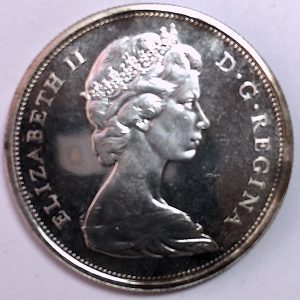
-
1965 Canadian Half Dollar
-
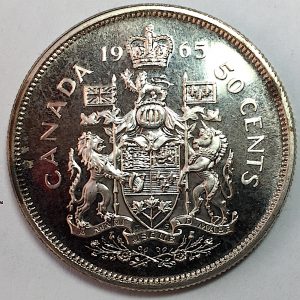
-
1965 Canadian Half Dollar reverse
Images taken with an iPhone 6 Plus
This is not to suggest that we can start grading coins by computer tomorrow but we can start soon. Programs have to be written to support the type of image analysis that would be required to determine an MS-69 coin from an MS-70. In fact, we may see fewer MS-70 coins using computer image analysis because the closer we look the more flaws we will find.
Professional Coin Grading Service provides the tip of this iceberg with the PCGS Photograde app. Whether you use the online service or one of the mobile apps, detailed imaging, and high definition displays can show you the details necessary. In fact, in a video PCGS produced about Photograde, they note how you can see the scratches on the imaged coin.
Images from PCGS Photograde App on the iPhone
If you can use the high definition images to see the details of coins, then the first step would be to use those images and the knowledge of grading to grade coins. Digital images can be transmitted anywhere there is a connection using the proper teaching platform.
With all due respect to the numismatic expert that said to me that you cannot teach grading using the computers, it is time to evolve from the early 2010s and see how technology has evolved to make it possible.
May 21, 2016 | ANA, commentary, shows, technology
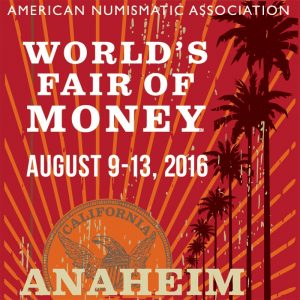 I received a note in my email from the American Numismatic Association asking for members to propose a Money Talks session at the World’s Fair of Money in August. Although I have several ideas for a Money Talks session, I will not propose a talk because I may not be able to attend the show.
I received a note in my email from the American Numismatic Association asking for members to propose a Money Talks session at the World’s Fair of Money in August. Although I have several ideas for a Money Talks session, I will not propose a talk because I may not be able to attend the show.
Later in the list of incoming email was a note telling me that I can register online for Summer Seminar. I have wanted to attend the classes in Summer Seminar for some time. In this case, the problem is timing since it always is held at the end of June or the beginning of July, the change of a fiscal quarter.
I know that the ANA has to create a schedule that suits the greater organization and includes the availability of facilities for these events but there are some of us who will be left out because of scheduling conflicts.
There are also the travel issues. Aside the expense of travelling to Anaheim or Colorado Springs, there are people who cannot travel because of time, economics, or physical limitations.
Now is the time for the ANA and any other organizations that provides educational sessions to consider adding online access to their shows.
Anyone who has visited the new money.org has seen that the ANA has revamped the site and the services to be modern, flexible, and has new resources that were not available years ago. It supports a vibrant community and provides new resources.
 Now it is time to take the next step: Live coverage of shows, the broadcast of courses and lectures, and virtualize the conventions.
Now it is time to take the next step: Live coverage of shows, the broadcast of courses and lectures, and virtualize the conventions.
There are technologies that can help support the bringing the lectures, courses, and other activities to an online community. There are a number of web-based conferencing system that requires a minimal amount of technology to broadcast these activities to collectors everywhere.
This can also be employed for other shows. Convention centers, hotel conference rooms, and other venues are almost all connected.
I recognize that there are some courses that cannot be taught in this manner. Classes that require physical access to materials, such as coin grading, will have a difficult time in this environment. However, a grading “light” class using high quality images to show the differences on the screen can be taught.
In other words, instructors would have to rethink their approach to some of these classes.
Virtual shows cannot replace the advantages of being there. I like the ability to see and talk with the people and dealers; looking through some of the more esoteric numismatic items like medals and tokens; or just walking by a table to find something interesting and unexpected you would not find online.
Virtual shows can be recorded, stored, and enjoyed for some time to come. Classes and talks becomes long term references for the community and can be used to help promote future shows.
Although the ANA does have some recording of the Money Talks lectures its available after the fact at the will of the commercial organization that is providing the recording services. Not only should these videos be made available to members but should be broadcast live. If they are broadcast using web-based conferencing software, the online audience can participate.
Numismatics has the problem of being too young to have influence or too old to adapt to the new ways of the world. Moving more to online access will help bring in the that Lost Generation between those being a Young Numismatist and us older collectors
Looking at the demographics of the hobby’s future the first wave of the GenXers are now becoming AARP eligible with their children, the Millennials, 20 years away from being regular participants. Why not meet them where they hangout: online! Not only will virtual shows help those of us with travel and time restrictions but will attract new members.
Growing the hobby is like growing a business; you have to look at what your target market’s demographics are and figure out how to reach them. For hobbies like numismatics, the new target is online where the current generation is moving and where the next few generations will be. Not adapting to those new markets will hurt the numismatic market in a way that it may not recover.

Panorama of the 2013 National Money Show bourse floor at the Ernest N. Morial Convention Center in New Orleans
Jun 14, 2015 | coins, fun, news, technology, web
When I discussed the American Numismatic Association election, I noted that my posting has been more sporadic because of a business I started. This will continue at least for the next few months.
 However, if you are looking for different types of coin news and information, I invite you to follow me on Twitter. You can find me @coinsblog. For those of you not familiar with Twitter, it is a social media site where users post information using 140 characters or less. This makes it difficult to post long diatribes of extensive notes. What it is good for is to post short messages with a link to longer stories.
However, if you are looking for different types of coin news and information, I invite you to follow me on Twitter. You can find me @coinsblog. For those of you not familiar with Twitter, it is a social media site where users post information using 140 characters or less. This makes it difficult to post long diatribes of extensive notes. What it is good for is to post short messages with a link to longer stories.
Those who either follow my Twitter feed on the web, using their favorite app, or the the box on the sidebar of this page will note that I will post links to coin, currency, and bullion-related stories from around the web. These stories are not from the usual set of numismatic-related websites like CoinNews.net, CoinWeek, Coin World, Numismatic News, etc. I figure that many of you would read these sites without my prompting. If you are not reading the articles on those sites, here is my endorsement for all of them. I read them all regularly.
Items I do post are from other news sources from around the web. Most of the articles are from media outlets but there are some financial blogs that make it into the mix.
The stories I post are about coins that have been about issued or planned to be issued coins and currency; news about bullion; some economic news that will affect circulating coins and currency; stories about shows where ever they appear; stories about collectors and collecting; or anything else that catches my eye.
The stories that end up in my Twitter stream are “hand selected.” This means I have a few saved searches and I periodically read through them looking for something interesting. Sometimes there are a lot of stories on one topic, such as the recent stories about France being upset with Belgium for striking a Waterloo commemorative. Other times it could be serious but amusing items like Zimbabwe phasing out its inflation currency at the rate of on U.S. dollar for ever Z$35 Quadrillion (that’s Z$35,000,000,000,000,000 or Z$35 thousand million) of inflation currency.
Similarly, I will post interesting pictures I find onto Pinterest. Pinterest is social media for pictures. Pictures are pinned to Pinterest like a bulletin board. You can follow those who pin on Pinterest (pinners) or their individual pin boards. I keep a few boards on Pinterest that I pin to as I look at the various articles. I try to pin something different than the usual coins. Most comes from the articles I find as I search for news stories.
Unless I find something different, most of the items from the news I post to my “In The News” board. One of my popular boards is “Coin & Currency Art” where I post items made from coins or currency or items made to look like coins and currency (that are not or intended to be counterfeit). If you like looking at interesting items, you might want to join Pinterest and start to follow many of the numismatic-related pinners already on the site.
I will try to finish some posts I started shortly. Until then, stay tuned and watch social media for my take on the on-going news.
Aug 9, 2014 | ANA, technology

I was not able to make it to Rosemont for the
World’s Fair of Money but wanted to deliver a statement about the security of the new
money.org website and service. The following was the statement I sent.
I apologize for not being with you in Rosemont to deliver this personally, but I wanted to send this quick report about the security of the new website and the systems that support the website.
Since joining the Technology Committee, my goal has been to ensure that the underlying architecture, the computers and network that connects them, is robust enough to support anything the ANA would want to do and to make sure that it is secure so that the ANA does not add itself to the list of recent attacks.
From the beginning of this project, many decisions were made that has lead to the system being designed in a way that could support anything the software can accomplish. A company with an excellent industry reputation hosts the physical computers. Also, the architecture of the computers, the way they are setup and connected to each other, is done in a way to allow for growth while being able to maintain security.
As someone who has been working in computer security for more than 25 years, it was important for me to make sure that not only my information was kept safe, but that of all ANA members were also protected. I am happy to report that the systems and software supporting the ANA website are properly hardened to resist attack.
I understand that there will be the ongoing question “is the site secure.” The problem is that there are threats out there that we do not know about, threats that have yet to be discovered or created, accidental mistakes, and errors that can cause problems. I can report that this system is designed to protect against known attacks, it is also design to catch many errors and repel as many potential attacks as possible.
In computer security, we work on identifying the risks and what it will take the mitigate them based on how confidential the data is, the integrity that has to be maintained, and how it is to be made available. One area of concern was the personally identifiable information, or PII, of member data including their login information and the credit cards they use with the ANA.
You might have read the news were it was reported that overseas hackers stole over one billion passwords throughout the Internet. I can report that the method they used to steal all those passwords will NOT work on the ANA’s website. Those same protections will help keep the PII of ANA members safe.
Another area of concern what the safety of member credit card information. To protect the confidentiality of the ANA member’s credit card information it is important to note that anytime the credit card information is communicated from one computer to another, it is encrypted using state-of-the-art encryption. After providing the ANA with the credit card and is processed, the services the ANA use to manage member information will not keep the credit card information. The credit card information is deleted and all that the ANA keeps is a transaction number that can be used to verify the payment with the credit card processor.
My family and friends know that when it comes to computer security, I am very paranoid. Many resisted doing certain online tasks like e-filing their taxes until I was satisfied with the security of the site. If a member was to ask me if I would use and trust the website as designed today, I would give it a hardy endorsement and say that I would register even if I was not a member of the Technology Committee. I am convinced everything was done to maintain the integrity of the membership information while keeping it confidential.
Finally, I would like to congratulate everyone on a job well done. Specifically, I would like to thank Jake Sherlock for delivering this message for me and congratulate him on a job well done. I also would like to send my highest commendation to Ann Rahn, the ANA’s project manager, who not only did a fantastic job herding the cats but also put up with the special quirks of the members of the Technology Committee. The next time I see them, I owe them a beverage of their choosing!
Thank you for allowing me to be part of this process.
Aug 4, 2014 | ANA, technology, web
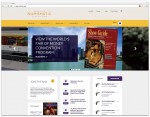 The future of the American Numismatic Association began on Friday, August 1 with the launch of the new ANA website!
The future of the American Numismatic Association began on Friday, August 1 with the launch of the new ANA website!
What are you talking about, the ANA has a website.
This is the NEW website with a new look and new technology.
But it’s the ANA, the website must be like putting lipstick on a pig.
No, it isn’t. The website is a complete re-engineering of the ANA online and digital assets to move the ANA into the present and position the organization for the future. First, the computers that the site is running on are no long in the headquarters in Colorado Springs. The new computers are located in a world-class data center run by Level 3 Communications, one of the leading service providers in the industry. Level 3 has an impeccable reputation for being able to manage computers and networks that anyone with a technical background working with the ANA on this project did not question this as the choice for the hosting of the new website.
Supporting the website is a new membership management system that the staff in Colorado Springs has reported as being easier to use and makes it easier to support the members. Rather than having to work around the problems and mistakes of the older software, the new software allows the ANA to update its procedures to better serve the members.
Finally, the website is supported by a new content management system (CMS) that makes it easier to add and change information as necessary. A CMS is the software stores the information you see in your browser and is served up to you on demand. CMS helps keep data in a way to allow it to be more easily managed so that it can be displayed in the browser in a way that will help you stay engaged.
While it looks like the ANA just changed the look of their website, everything about the ANA web presence has changed. It is a new service that will allow the ANA to introduce and engage more members as the world shifts to being online.
Yes, it looks nice, but are they introducing anything new?
Looking nice is important but it is only the beginning. The first application that has been rolled out is the social engagement features. There’s a place to post articles to share with the community, a forum to chat with other numismatists, and a place to show off your collection. There are also ways to interact with the ANA, pay your dues, and read the online version of The Numismatist.
Social media already exists and several forums where people can interact. What makes this so special?
First and foremost, rather than trying to interact with Internet trolls you will be interacting with fellow members of the ANA. While they may decide to participate using an alias, you can be assured that only ANA members will be allowed to register and us the ANA’s system.
So what’s the big deal? There are other sites with numismatic content.
Remember those commercials that touted “membership has its privileges,” this is only the beginning of what will be available exclusively to ANA members. One of the first socialization features is for contributors to earn “coins” or electronic awards for contributing to the numismatic community. Right now, the coins only provide ANA members bragging rights, but in the future, the coins will include potential prizes, discounts with ANA member establishments, and other incentives.
So the ANA has turned the website into a game?
The ANA has turned their website into a one that is more engaging for the membership and to attract new members. The world is moving online and in order for the ANA to serve all members, the ANA has to embrace and expand its online presence. The ANA Board of Governors’ goal is to make money.org be the numismatic hub of the community. The place to go where is anyone has a numismatic question, they can start with the country’s premier numismatic organization.
Well… it looks interesting. I’ll give it a look and see what happens.
I hope everyone gives it a look and provides feedback to the ANA. A lot of people really did a lot of work getting this first release completed on time and on budget. And not only that, the areas where the ANA holds and processes personal information was secure from the beginning because one of the site’s advisors (me) is an information security professional in real life. There was no way I was going to jeopardize my professional reputation by being involved with something known to have security problems. Besides, as an ANA member, they are storing my information and processing my credit card, too!
Everyone please go to money.org and interact with the website. Engage in the forums. Let us know what you think!
Apr 30, 2014 | ANA, commentary, technology, web
“I can’t wait to see what a disaster the ANA new web site will be.”

Laura Sperber
I am not taking the statement out of context. It is the first sentence of the paragraph that appears in her Hot Topics blog post at the Legend Numismatics website.
Prior to this statement, I tried to give Sperber the benefit of the doubt. I greatly respect what she has accomplished in a male-dominated industry. I also appreciate her fight against coin doctoring and shining a light on the problems with coin doctoring and the grading services because I think it has made a positive impact. Unfortunately, her statement appears to be like throwing a tantrum for the sake of being right and not getting it right.
There is a difference between having an opinion and arguing to be right rather than investigating the opinion to getting it right. If Sperber was interested in getting it right, she would speak with those working on the project from the ANA headquarters to see what they are doing. If Sperber was interested in getting it right, as a member of the Board of the Governors she could ask to see the contract, project plan, and records of the costs. If Sperber was interested in getting it right, she could have asked the chairman of the Technology Committee for a meeting with the committee members, who are ANA members and professionals in the computing industry, for a frank discussion on the project.
In fact, Sperber could have asked to talk with me at the Whitman Baltimore Expo where Legend Numismatics always has a prominent table. I attended the show on both Friday and Saturday providing ample opportunity to meet and discuss her concerns.
“There is no way anyone can justify the price paid.”
Other than throwing verbal stones at Board meetings or in her blog, Sperber has not reached out to anyone to make sure she gets it right. Not only is the price in line with industry standards but the team working on the project at the ANA’s headquarters have really worked to keep the costs down and prevent overruns. As a long-time critic of the ANA’s technical acumen, Executive Director Kim Kiick and her team has done a phenomenal job.
Sperber may be a good numismatics business person but she is not knowledgeable in the business of technology to understand how foolish she sounds.
“I know I have a far more reaching and complicated new web site that cost me MUCH LESS to build at LM Auctions.”
With all due respect, no you do not. Buying auction and shopping services off the shelf is not difficult or complicated. What is difficult and complicated is choosing amongst the dozens of vendors to provide the service. If you do an Internet search for “create an auction site” you will find the list of vendors and instruction as to how to go about doing this. If you have the technical background, you can build the site yourself using any of these services. Otherwise, there are plenty of people who can be hired to do the work for you.
In creating Legend-Morphy, Sperber and her business partners purchased technology for the auction services from Sebae Data Solutions of Ocala, Florida. Sebae may not be the company that did their integration, but it appears the Legend-Morphy site was built on top of Sebae’s Bidopia auction platform.
How complicated could creating an auction website for this company be when her partner, Dan Morphy Auctions, uses Sebae’s services to manage their auctions? Morphy Auctions is well known and respected in the antique collectibles business, thus it would make sense that if they were to branch out into other areas, they would use proven technologies they are familiar with.
The use of Sebae’s software and services is not a problem. What is a problem is Sperber’s misrepresentation of what it takes to build storefront and auction site. The difficult part is to create an experience to entice customers to bid and buy. From what I can see, the company they hired to integrate these services did a good job for what they did, but it is not complicated.
In comparison, the new ANA web presence is not about selling goods and services. The new ANA web presence is about education. It is about providing an experience to welcome people to enjoy numismatics on all levels. The new web presence has to be able to integrate the business of the ANA including processing membership requests, bring the library closer to the members, allow those from the web experience the exhibits of the Money Museum, deliver education, provide a forum for numismatists to meet virtually, facilitate virtual attendance of shows, and possibly be able to allow people to participate in live events such as the Money Talks sessions at the ANA shows.
If you want to compare what the ANA is trying to do with its website versus having a site that is a numismatic catalog such as the one Sperber thinks is so complicated, go to the website of any college or university and look at the content offered. Those sites offer online classes, registration, recruitment, information about seminars, and information about activities including athletics.
Unlike an auction or retail website, there is no commercial off the shelf (COTS) software to support the functions the ANA or any educational-based organization could buy. Rather, the ANA and the colleges have to buy services and pay to have them integrated. In this case, the ANA is buying the membership services and backend processing but it has to be integrated to support the ANA mission. The ANA will be buying other services that can be used to support the ANA mission, but you need something to bring those services to the membership and public.
Think about your car. The automobile manufacturer may buy parts to build an engine but it does not manufacture those parts. They will buy the door assembly because it is cheaper for them to hire a dedicated company to run the electronics or buy the seats that are built to their specification. But when it is all delivered, the automobile manufacturer integrates the parts into the one unit that appears on the showroom floor.
It is the same analogy in the website building business. Legend-Morphy’s business model allows them to choose one vendor with a few selected products that can be integrated without a lot of work as compared to the ANA’s model that has to provide very diverse services that cannot be purchased in one place but still has to be built to look like one product.
Based on my previous conversations with Sperber, I believe she has been in the business of numismatics as long as I have been in the computer and technology business. I respect her passion, knowledge, and accomplishments for what she has done in her career. But when she makes her pronouncements that the Legend-Morphy website is “a far more reaching and complicated new web site” when those of us who know better, then not only does she come off as foolish, but she proves that she is out of her league when it comes to assessing technology.
This initiative was started by then ANA President Tom Hallenbeck. Hallenbeck understood that the Board and the ANA headquarters were not technically savvy enough to do this without help, so he formed the Technology Committee consisting of members who are professionals in all aspects of technology. Current ANA President Walt Ostromecki, who will jokingly be the first to tell you he might be less technically aware than Hallenbeck, was insistent on keeping this committee together to ensure the success of the site.
When this started, the committee Chairman James Reinders reached out to me knowing that I was a staunch critic of the lack of technology used by the ANA. It was also clear that my background in building systems and computer security would be a benefit to this effort. Sure, they were hesitant in contacting me because I had not been exactly complementary to the ANA (examples are here and here).
This was essentially a put-up-or-shut-up opportunity. I could sit in front of my computer and kvetch or I could be part of the solution. I hope my input to the committee, headquarters staff, and Board has been helpful because as a member I am trying to do what is best for the organization.
Laura Sperber is no longer an outsider. Sperber is directly inside as an elected member of the ANA Board of Governors. She has access to the same information about this project as I do. However, she has chosen to throw verbal and written rocks at the issue in an attempt to be right rather than get it right.
Therefore, I challenge Governor Sperber to put down her verbal rocks and get it right. I challenge her to reach out to the ANA headquarters, the Technology Committee, and even participate in our weekly status teleconference to learn about the project. If she is serious about representing the best interest of the ANA as an elected member of the Board of Governors then this is the opportunity to learn about the project.
Apr 26, 2014 | advice, education, security, technology, web
 The Royal Canadian Numismatic Association sent email to its members notifying them that on April 24 someone attempted a phishing scam trying to impersonate the RCNA Executive Secretary trolling for information. The RCNA did not send out an email note asking for information and recommended deleting them email.
The Royal Canadian Numismatic Association sent email to its members notifying them that on April 24 someone attempted a phishing scam trying to impersonate the RCNA Executive Secretary trolling for information. The RCNA did not send out an email note asking for information and recommended deleting them email.
Phishing is the term used to describe the attempt to convince someone to reveal personal information by sending them an email that looks like it came from a legitimate source. In this case, the attacker made their email look like it came from the RCNA hoping that members would give up their personal information.
When I am not blogging, meeting with other numismatists, or being with my family, I work in information security for the United States federal government. In my professional life, I have seen a lot of attempted and successful attacks against both government and commercial systems. However, the one attack that is the most difficult to defend are those where humans are convinced to act against their own best interest, such as a phishing attack.
Social engineering attacks are my favorite attacks. One reason is that it helps demonstrate to the organizations that I try to help that security is more than controls, encrypted communications, or anything else you might have read in the news. Security is a process that requires diligence, the same as it does in the real world.
The following are four rules that you can follow to help keep safe online:
Rule #1: Unless you are 100-percent certain that the email is legitimate, do not click on the link!
You will be never 100-percent certain that any email you receive is legitimate so make sure that you are as close as 100-percent certain as possible. One thing you can do is to move your pointer over the link, stop, and wait for the tooltip to show you the address.
Tooltips are those balloon-like popups that will tell you something about the link or element before you press the mouse button. One way to tell that a link is bad is that if the address is not what you think. For example, if the link is supposed to send you to the RCNA website, the tooltip better say that it will send you to rcna.ca. If it does not, then do not click on the link.
When you check the link, the address of the server is the first part of the address. If what should be the server name is not in that area at the beginning of the address, do not click on the link.
One trick the phishers use is to show you what looks like a complicated address in the message, but the link behind it will send you to another website. This is where tooltips can help. If you hover over the address and they do not match, it is an attempt to trick you and you should not click on the link.
If you are using a web-based email client, you can check the address on the status line at the bottom of your browser window. Check to see if the address makes sense is also a good tool. For example, if the link is supposed to be from the RCNA and “rcna.ca” is not the address of the server in the link, then it is a phishing attempt and you should not click on the link.
If you are unsure about the link, then go to your browser and type in the address yourself. Rather than clicking on a suspicious link, you can visit the RCNA website by typing “http://rcna.ca” directly into your browser’s address bar.

Anatomy of a Phishing email
(courtesy of the University of California-Davis)
Rule #2: No legitimate company or organization will send you a form to fill out and email back
One of the tactics that the phishers use to try to trick you into giving them your personal information is to create a form that looks like it is legitimate. Just as it is easy for someone with moderate skills to fake a web page, they can create a counterfeit form. Not only will the form be counterfeit, but they could also embed programs in that form to steal your information.
Embedded code in documents is called macros. Macros are used to command programs to do something for the user. When used in productive environment, macros can be a wonderful tool to create dynamic documents. But the same instructions that can make macros a productive tool can also be used to do bad things.
Unless you are certain about where the document came from, then do not open a document. If you open the document and the program asks if you should enable or run macros, do not enable macros.
This is not just a problem with word processing document. PDF documents can also deliver very nasty malware (malicious software). Not only can an attacker add macros to a PDF document, but someone can embed the technology called Flash in those PDF. Flash is the technology that helps you see videos and add enhancements to the visual interface of some websites. But Flash can be used to attack your computer system. Opening a PDF file sent by someone you do not know can be as dangerous as a word processing document.
Rule #3: Do not open suspicious attachments
Another trick the attackers try to use is adding an attachment named in a way to try to trick you into opening the file. File names consist of the name of a file followed by a period followed by a file extension. The file extension is used to tell the computer the type of program to open to allow you to work with the file. There are three file extension that very dangerous and should never be opened unless you are absolutely sure who sent them to you: .zip, .exe, and .dmg for Mac users.
The .zip file extension tells the computer that the file is something called a Zip archive. A Zip archive is a file that is formatted to allow it to store many files that are compressed. Zip files are used for many legitimate purposes including being the default format of Microsoft Word’s .docx file. Unfortunately, it can contain files that can be used to attack your system.
One of the types of file that can be included in a Zip archive is an .exe or executable file. Simply, these are programs in the same way that Microsoft Word is a program. Once an executable file is opened, it will do whatever it is programmed to do. Among the things that the program can do is key logging. A key logger reads what you type on your keyboard, what you click on the screen, and in some cases what is displayed on your screen. The key logger will be able to capture the user name and password you entered when you visit any website including your bank’s website. The problem is that when a key logging program is run, you do not know it is watching what you type. Nor do you know that it connects to a server somewhere on the Internet to send the information to the attacker.
While Macs are more difficult to attack, they are not immune. Mac users should never open a file with a .dmg file extension unless you know who sent the file. The Macintosh .dmg file is a disk image file. A disk image file is formatted to look and acts like a disk so that when you double click the file, it will mount on your computer as if you plugged in an external disk drive. Because .dmg files are commonly used to install legitimate software, sometimes the installation can be automatically started. If you allow the installation to continue, it you can install software as dangerous as what I described for the Windows .exe file.
Rule #4: When in doubt, throw it out!
 While all this seems simple to me, I have been in this industry for over 30 years and am used to the complication. The problem with email is that it was developed as a way for researched to communicate by plain text across the Arpanet, the forerunner of the Internet. Essentially, email is a text-based service that has been extended in so many ways that it has created a complicated series of standards that requires a degree in computer science to analyze.
While all this seems simple to me, I have been in this industry for over 30 years and am used to the complication. The problem with email is that it was developed as a way for researched to communicate by plain text across the Arpanet, the forerunner of the Internet. Essentially, email is a text-based service that has been extended in so many ways that it has created a complicated series of standards that requires a degree in computer science to analyze.
Even if you cannot fully analyze whether the message is spam or legitimate, if you have any doubt, then just press the delete button. If the message came from a source you know, contact them off line and ask if the mail is legitimate. If you think the email is from your bank, call the bank and ask. If you think the email is from your credit card company but not sure, call the credit card provider and ask. If you think the email sent from the RCNA is suspicious, call them and make and ask.
A little intuition can be of great help in these circumstances.
Stay safe online and have a good weekend!
Apr 11, 2014 | advice, coins, security, technology
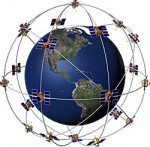 Computer and online security has been a topic for the news lately. This was because of a mistake made in software that was being used to try to keep your password from being seen by criminal hackers was making it visible to those criminals. In the wake of the news, the Doug Davis of the Numismatic Crime Information Center sent out a message to his list of contacts that had one central message for every dealer and collector:
Computer and online security has been a topic for the news lately. This was because of a mistake made in software that was being used to try to keep your password from being seen by criminal hackers was making it visible to those criminals. In the wake of the news, the Doug Davis of the Numismatic Crime Information Center sent out a message to his list of contacts that had one central message for every dealer and collector:
Shooting simple photos from your smart phone or personal camera can lead criminals right to your location… with pinpoint accuracy using GPS satellites.
You might have heard the term “metadata” in the news in the context of its collection by the National Security Agency. For those who do not know what metadata is, think of it as a description of the data. Think about an exhibit in a museum. The exhibit contains several artifacts arranged in a certain way to try to tell a story. But the story is incomplete because a little more information is needed to put it into context. But the information cannot be shown as an artifact in the exhibit, so the person setting up the exhibit adds a description added to the exhibit to make it more understandable. That description would be the metadata to the exhibit.

Example of what you can find out about your image in the file’s Properties under Windows
Modern cameras, cameras built into smartphones, and even some memory cards that can be inserted into older cameras can determine where you are located and record that in the metadata in the picture you take. And contrary to what you have read, new technologies do not have to use the Global Positioning System (GPS) to figure out where you are located. There are services that use WiFi to record your position. It is called WiFi Positioning System (WPS). Basically, WPS determines where it is located and communicates that to WiFi connected services so that it could be used to determine your location.
I know geotagging can be a lot of fun. A few years ago when my wife and I drove from Portland, Maine to Canada, I had taken pictures of the scenery along the way hoping to find a moose. After all, how can you go through the woods of Maine without seeing a moose?! When I loaded the pictures on my Mac in iPhoto, it was fun to see the plot of where the pictures were taken on the built-in map. I was able to follow the road into Canada just based on the geocodes.
What I did not do is post those pictures while on the road. Aside from the lack of cellular connectivity, posting those pictures would advertise to evil doers that I was not home and too far away to do anything.
If you take geocoded pictures of your coins and post them online, whether it you are posting them to a social media site or a discussion forum, you are advertising where the coin is located. This might not be a problem if you collection consists of what dealers would call ordinary or common coins. But if that 1937-D Buffalo nickel has only three legs, that geocoded picture announces that you have at least one high value coin that someone might want to acquire through less than legal means.
The problem is that I love to see pictures of interesting coins. This is one of the reasons I love Pinterest. Aside from sharing my own picture, Pinterest allows me to pin coin images from around the Internet to create virtual scrapbooks. Do you have an interesting coin? I want to see it. Different types of tokens and medals are excellent artwork.
However, when you take the pictures of your prized collection, make sure you turn off geotagging!
Unfortunately, I cannot tell you how to do it on every camera because the process is different. To help, I found the following two articles that provides an overview of how to turn off geotagging on the common smartphones:
- “How to Disable Geotagging on Your iPhone, Android Phone or Blackberry”
- “How to disable a smart phone’s geotagging feature”
For other cameras, you need to find the manual that came in the box to figure out how to do this.
In the meantime, stay safe online and let’s see those beautiful coins!
 I am often asked what resources I used for online research when writing articles for the Coin Collectors Blog. For more than 12 years of writing this blog, I have found hundreds of websites that I have used to various degrees. However, there are a few that have provided the best information.
I am often asked what resources I used for online research when writing articles for the Coin Collectors Blog. For more than 12 years of writing this blog, I have found hundreds of websites that I have used to various degrees. However, there are a few that have provided the best information. As I peruse the Interwebs for numismatic-related stories from non-numismatic sources, my searches are inundated with stories about Bitcoin, crypto-currencies, and blockchains. Most of the time, the stories are just noise given my objective to find information relevant to collectors including the issuance of circulating currencies and the impact of precious metals on the market.
As I peruse the Interwebs for numismatic-related stories from non-numismatic sources, my searches are inundated with stories about Bitcoin, crypto-currencies, and blockchains. Most of the time, the stories are just noise given my objective to find information relevant to collectors including the issuance of circulating currencies and the impact of precious metals on the market. → Read more at
→ Read more at 

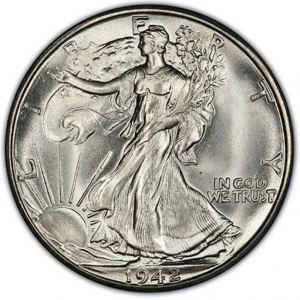


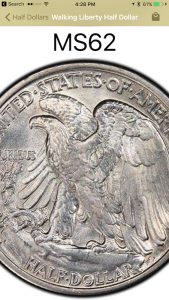

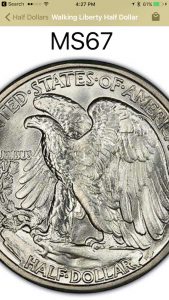

 Now it is time to take the next step: Live coverage of shows, the broadcast of courses and lectures, and virtualize the conventions.
Now it is time to take the next step: Live coverage of shows, the broadcast of courses and lectures, and virtualize the conventions.






 While all this seems simple to me, I have been in this industry for over 30 years and am used to the complication. The problem with email is that it was developed as a way for researched to communicate by plain text across the Arpanet, the forerunner of the Internet. Essentially, email is a text-based service that has been extended in so many ways that it has created a complicated series of standards that requires a degree in computer science to analyze.
While all this seems simple to me, I have been in this industry for over 30 years and am used to the complication. The problem with email is that it was developed as a way for researched to communicate by plain text across the Arpanet, the forerunner of the Internet. Essentially, email is a text-based service that has been extended in so many ways that it has created a complicated series of standards that requires a degree in computer science to analyze.

